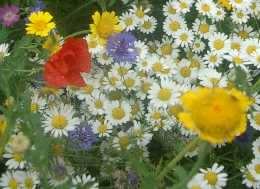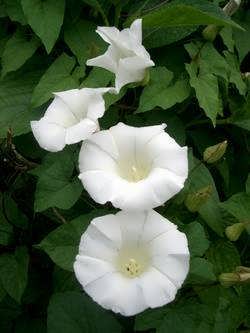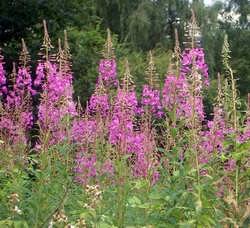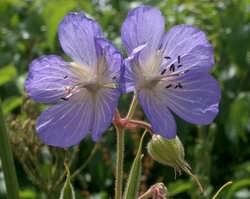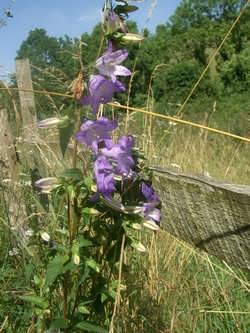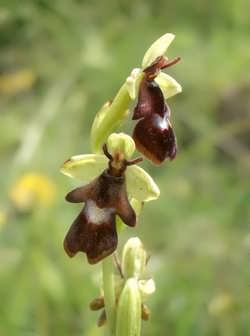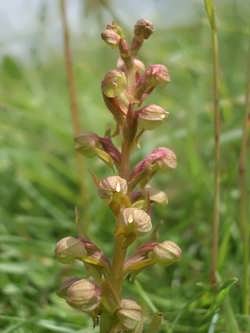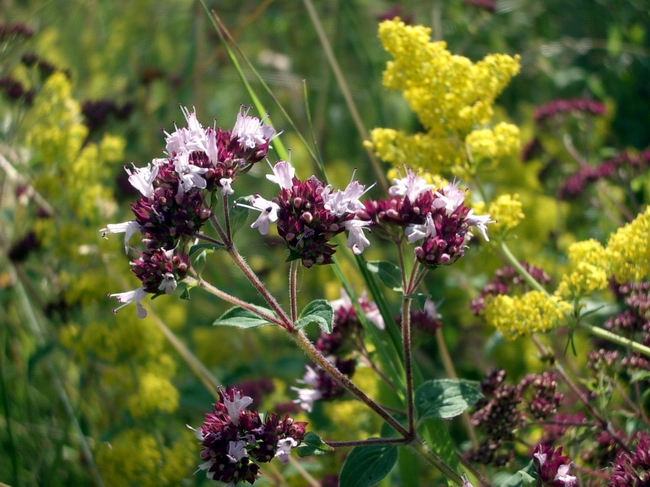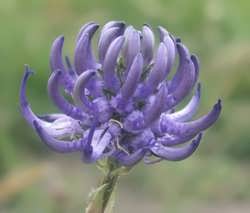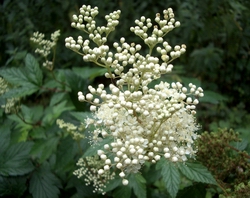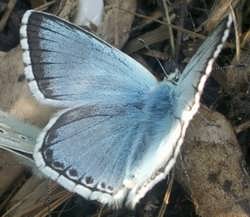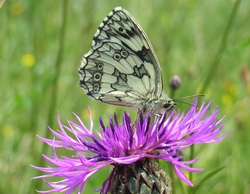When to Watch Wildlife |
J | F | M | A | M | J | J | A | S | O | N | D | Search |
Current wildlife highlights |
||
|
What's new on this site |
||
|
Wildlife calendar |
||
|
Plants and Animals |
||
|
Habitats |
||
|
Wildlife sites |
||
|
WWW links |
||
|
Guide Books |
||
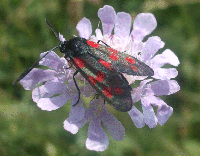 |
||
|
© PMcS 2006 |
|
July |
||||||||||||||||||||
|
|
||||||||||||||||||||
|
arable "weeds" |
||||||||||||||||||||
This month look
out for:
|
||||||||||||||||||||
| By July the
countryside has taken on a rich uniform green, punctuated with
contrasting golden squares, where the hay and silage has been cut, or
the barley is ripening. The air has a scent of cut grass and
frizzes with insects. Summer relaxes. As the warm breeze caresses the tall stems of the green corn, silver waves ripple across the fields reflecting the sunlight off the long seed awns. A sunny July will see the wheat mature. The hedgerows are full and plump with nettles, the tall upright hedge parsley, burdock, cleavers, creeping thistle, meadow crane's-bill, and grasses setting seed. Where the verges have escaped being cut false-oat grass and cocksfoot are the most dominant grasses. As the month progresses their ripening 'flower heads turn the roadside verges from green to flax yellow. In many hedgerows traveller's joy, which is a relative of the garden clematis, grows prolifically. Where it takes hold it can seemingly smother the plants below. It is also called old man's beard from its woolly seed head that appears later in the year. Greater bindweed also climbs though the hedge. Its big white trumpet flowers open during the day then twist closed as night falls. The occasional teasel can also find a foothold. The teasel's small pink flowers appear in whorls amidst its spiky flower heads.
In the west and northern counties, where the soil is more acidic, the pink bell foxglove flowers are climbing the stem, leaving conical seed pods lower down as the flowers die. Where stone walls are present the wall pennywort grows supporting spikes of small bell-like pale flowers. The brambles are still in flower and herald the blackberry harvest yet to come. At the foot of the hedge the pink and white lesser bindweed rubs shoulders with red and white clover and the feathery yarrow leaves, with its white flowers pushing up to the sky. At this time of the year the showy rosebay willow herb, found in many different places where the ground has been disturbed and enriched, comes into flower and can form spectacular drifts. It used to be called fire weed and was associated with old bombed sites after the war.
The birds are largely quiet now, but chicks are still growing especially those of sea birds on cliff nesting sites. When the atmosphere is heavy and close with threatening storms, minute thrips swarm and irritate. These tiny black insects get everywhere and are quite capable of even finding their way behind the glass of pictures hanging on the wall. The first broods of butterflies are ragged now but still flit between the flowers of rich grasslands such as that on the downs. The moths are now plentiful and can be attracted with lights at night. The slugs and snails likewise abound. Gardeners wage battle against them but should leave some for the hedgehogs and thrushes. |
||||||||||||||||||||
| Habitats and species |
||||||||||||||||||||
|
Parks and gardens:
As the buddleia comes into flower it attracts many insects such
as bumble bees, and cabbage white, small
tortoiseshell, red admiral and peacock butterflies.
Hedgehogs can be found snuffling around in many gardens. Do
not give them milk, which is bad for them, but if you wish to feed them
provide pet food. |
||||||||||||||||||||
|
Woodlands
(including wood pasture): Woodlands are largely quiet by July
as the main bird breeding period is drawing to a close and territories
do not need to be advertised. |
||||||||||||||||||||
|
Arable and
hedgerows: The edges of many arable fields where the herbicide
is less stringently applied supports the stunning red poppy
blooms and other annuals such as scentless mayweed,
pineapple weed and white campion, mixed in with barren
brome, a grass with dropping seed heads. Many "weeds" that are
dependant on this habitat are now amongst our rarest flowers.
Corncockle and corn marigold, for instance, have all but
disappeared from the countryside. |
||||||||||||||||||||
Road verges: In some locations the showy nettle-leaved
bellflower can be found. Along with meadow species you may
come across mallow species with pink flowers, or traveller's
joy and honeysuckle clambering over the hedgerows.
Occasionally a road verge can be cut just before the big flabby leaves
of horse-radish emerge. They then stand proud in small
clumps, looking rather out of place and very noticeable.
Horse-radish is actually an introduction but has now firmly
established itself in the wild.
|
||||||||||||||||||||
Chalk and limestone grasslands: These grasslands are often rich with
flowers in July although many of the orchids flowers are past their
best. However the relatively frequent fragrant,
pyramidal, common spotted, and the very rare burnt
and frog orchid may still be found looking fresh and
spectacular.
The blues, pinks and purples dominate. Amongst these are the flowers of the clustered bellflower, harebell, betony, thyme, small scabious, field scabious, marjoram, basil, black knapweed and greater knapweed, and later on the devils-bit scabious. They are joined in some places by the alpine looking round-headed rampion.
|
||||||||||||||||||||
|
Meadows (neutral) and flood plain grasslands: Many meadows
will be cut in mid July if they have not already been cut. The
oxeye daisy flowers start to look tired, but along with other plants
but are of course now setting seed. The grasses have grown tall
and with their wind pollinated flowers they struggle to set seed before
the mower does it worst. In the ditches and wet verges meadow sweet proliferates with its creamy white blossoms on tall stems.
|
||||||||||||||||||||
|
Acidic grasslands: |
||||||||||||||||||||
|
Heathlands: |
||||||||||||||||||||
|
Mountain
and Moorlands (uplands): |
||||||||||||||||||||
|
Rivers and ponds
(including bogs and mires): Along the river banks the creamy white
meadowsweet flowers put out a heady summer scent and are
accompanied by many other waterside species such as yellow flag iris,
figwort, hemp-agrimony, reedmace and the tall
spikes of purple loosestrife and hoary willow herb.
Young water birds such as mallards, coots and moorhens
may still with their parents feeding themselves or like many other
birds occasionally begging for food. |
||||||||||||||||||||
|
Sea and the sea
shore (including estuaries): With the advent of school holidays
(albeit much shorter ones nowdays) visit to the seaside may provide the
opportunity to search rock pools or the beach strand line. |
||||||||||||||||||||
|
Mammals: |
||||||||||||||||||||
| Birds:
The first of the summer migrants to depart are the cuckoos.
The adults leave in July to be followed by the off spring form this year
later. Somehow they find their way to Africa independently. Amongst the calls and songs that you may hear are the three note cooing of the collared dove and the five note cooing of a wood pigeon. The melodious songs of song thrushes, blackbirds and blackcaps are also occasionally heard in July, and stand out now that many other birds are silent. In the countryside you may come across flocks of goldfinches, known as 'charms'. They twitter and rattle loudly to one another, often singing from open perches high in trees or from the top of thistle stems. In woodlands some summer warblers are still singing, but you are more likely to hear the clicks and wheezes of robins from the undergrowth. On open farmland buntings are still singing and on heathlands, and other open countryside, stonechats clack to call to their young. Yellowhammers are still pushing out their 'little-bit-of-bread-and-no-cheese' phrases from the tops of hedges. They will continue to do so throughout summer. With the advent of swarms of summer insects house sparrows and
starlings join house martins and swallows in
pursuit of aerial prey. This is not their most natural way of
feeding, but these opportunists twist and spin in the air and often
successfully catch flies and daddy long legs for instance. The
swallows and house martins chat amongst themselves in mid
air. Both may still have young in their mud nests. |
||||||||||||||||||||
|
Amphibians & Reptiles: |
||||||||||||||||||||
Insects: Marbled whites, Chalkhill and common blues
are in flight. The large a magnificent broad-bodied chaser
dragonflies can be easy spotted as they aggressively tussle with
competitors over a patch of river, pond or wet ditch. They clash
in mid air and with surprising loud impacts. Damselflies are
common where there is any standing water.
|
||||||||||||||||||||
|
Plants:
Helloborine species, which are orchids, favour this later period to
flower and are well worth the effort to hunt out. |
||||||||||||||||||||
| Fungi: |
||||||||||||||||||||
|
|
All images and text are copyright PMcS 2006
